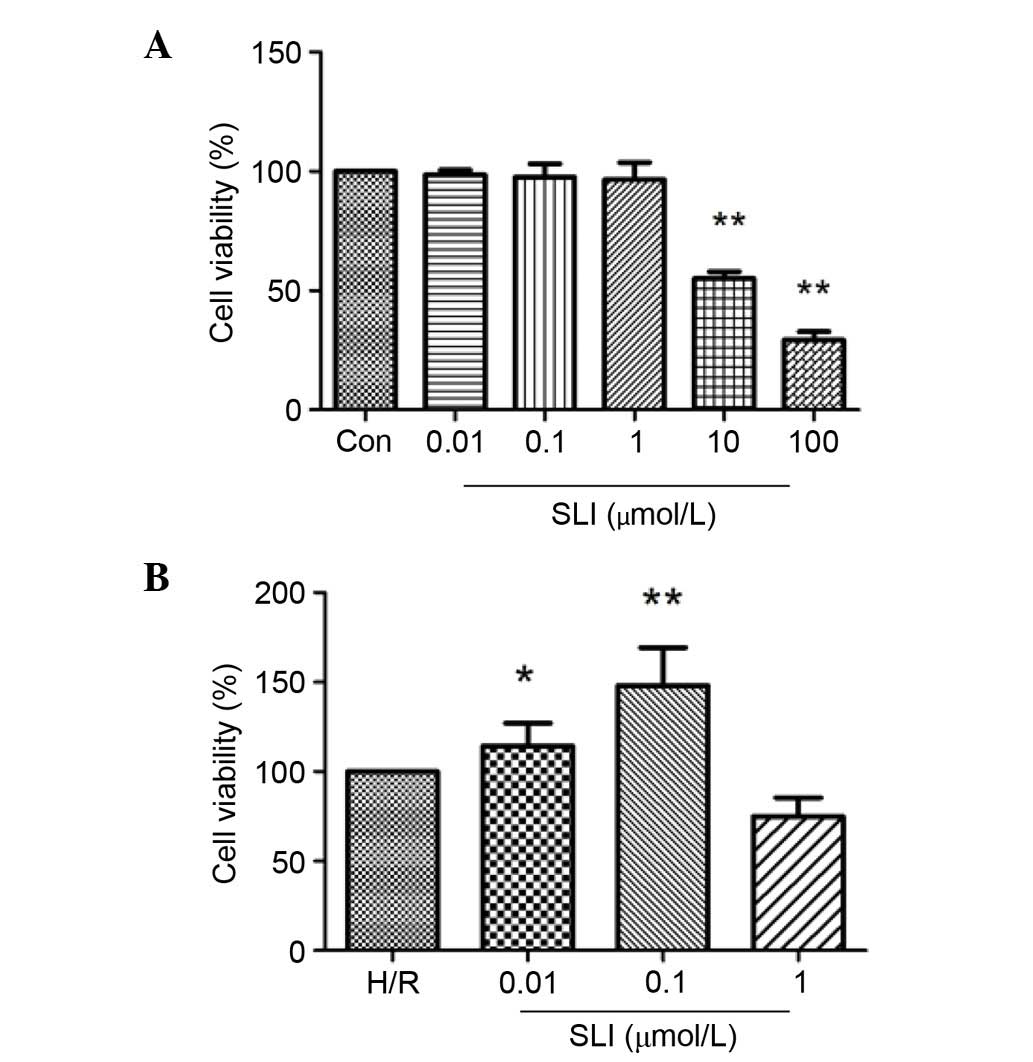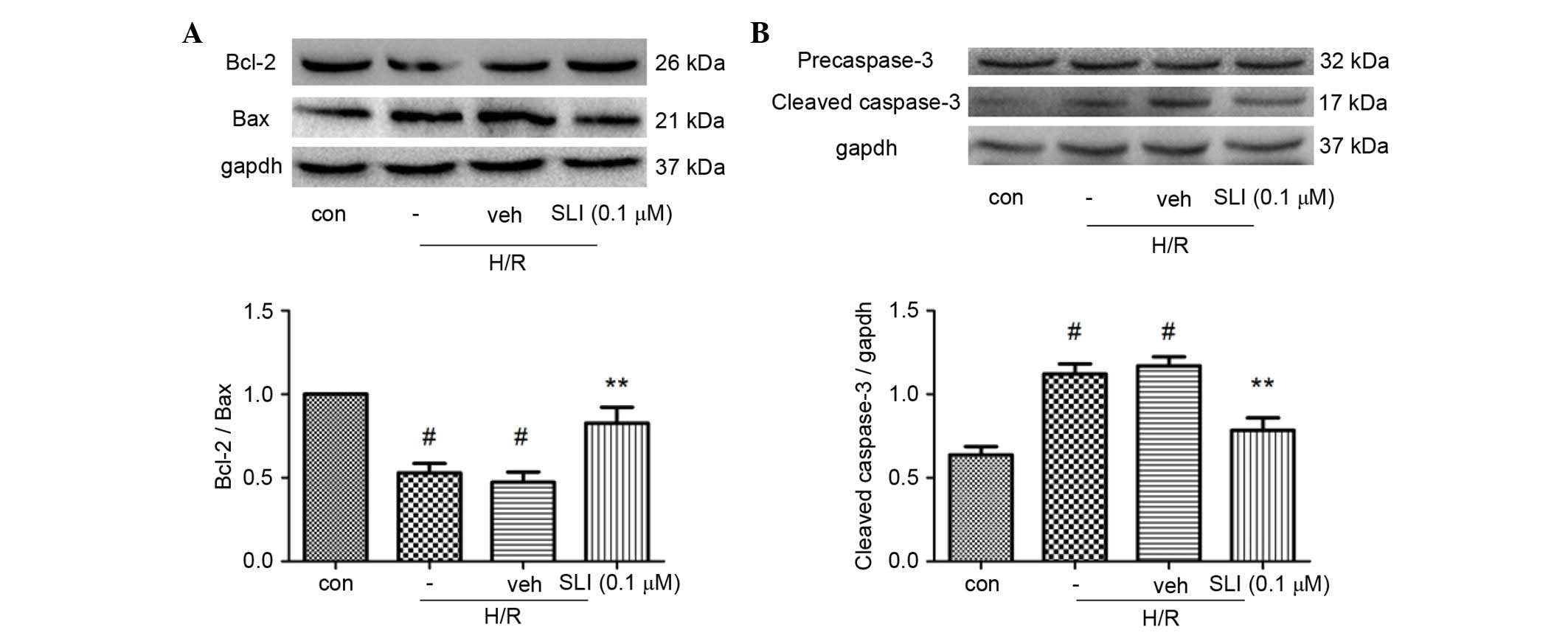Effect of Salvia miltiorrhiza and ligustrazine injection on myocardial ischemia/reperfusion and hypoxia/reoxygenation injury
- Authors:
- Published online on: October 11, 2016 https://doi.org/10.3892/mmr.2016.5822
- Pages: 4537-4544
-
Copyright: © Huang et al. This is an open access article distributed under the terms of Creative Commons Attribution License.
Metrics: Total
Views: 0 (Spandidos Publications: | PMC Statistics: )
Total PDF Downloads: 0 (Spandidos Publications: | PMC Statistics: )
Abstract
Salvia miltiorrhiza and ligustrazine are traditional Chinese medicines that have been used in combination for treatment of cardiovascular disease, including coronary heart disease, cardiac angina and atherosclerosis in Asia, in particular, China. The present study aimed to determine the effect of S. miltiorrhiza and ligustrazine injection (SLI) on myocardial ischemia/reperfusion (I/R) and hypoxia/reoxygenation (H/R) injuries via the Akt serine/threonine kinase (Akt)‑endothelial nitric oxide synthase (eNOS) signaling pathway. Male Sprague‑Dawley rats were randomly assigned into six groups: i) Sham group; ii) I/R group; iii) Low‑SLI group (6.8 mg/kg/day, i.p.); iv) Medium‑SLI group (20.4 mg/kg/day, i.p.); v) High‑SLI group (61.2 mg/kg/day, i.p.); vi) verapamil group (6 mg/kg/day, i.p.). Prior to surgery, the aforementioned groups were pretreated with a homologous drug once per day for 3 days. The effect of SLI following 35 min coronary artery occlusion and 2 h reperfusion was evaluated by determining infarct size, hemodynamics, biochemical values and histological observations. Additionally, cell viability, caspase‑3 expression, B cell leukemia/lymphoma‑2 (Bcl‑2)/Bcl‑2‑associated X protein (Bax) ratio, phosphorylated (p‑)Akt and p‑eNOS were also investigated following 2 h simulated ischemia and 2 h simulated reperfusion in H9C2 cardiomyocyte cells. Pretreatment with SLI significantly improved cardiac function in a dose‑dependent manner and reduced myocardial infarct size, creatine kinase, lactate dehydrogenase and malondialdehyde levels in blood serum. Additionally, myocardial histopathology changes in the rat model were also alleviated in SLI treatment groups. The present in vitro study revealed that treatment with SLI reduced the apoptotic rate of H9C2 cells by inhibiting the activation of caspase‑3 and increasing the Bcl‑2/Bax ratio. The effect of SLI was associated with increased phosphorylation of the survival kinase Akt at Ser473 and its downstream target eNOS following H/R. The present study determined that SLI may alleviate I/R injury in cardiomyocytes and inhibit apoptosis in rats by the activation of the Akt‑eNOS signaling pathway, and downregulation of the expression levels of proapoptotic factors, including caspase-3.
















